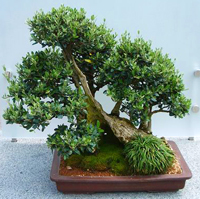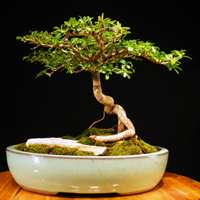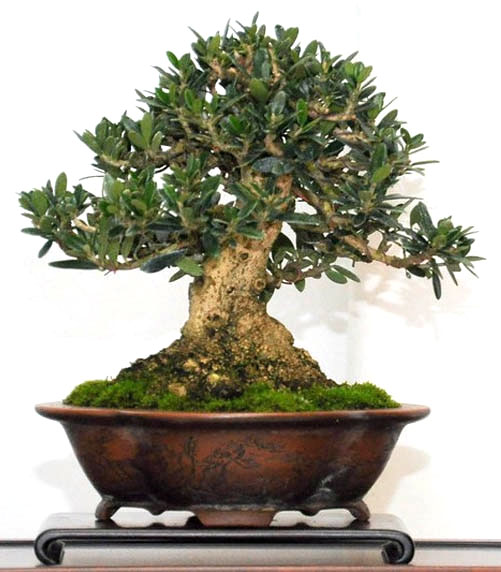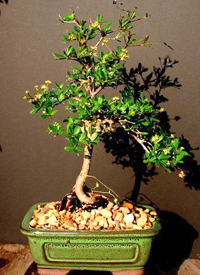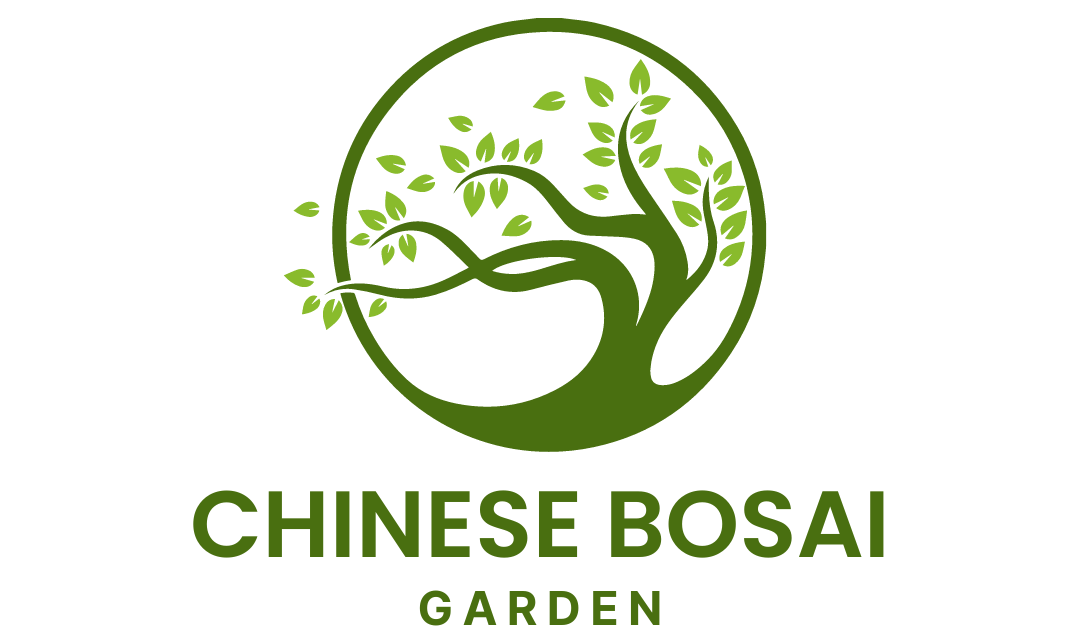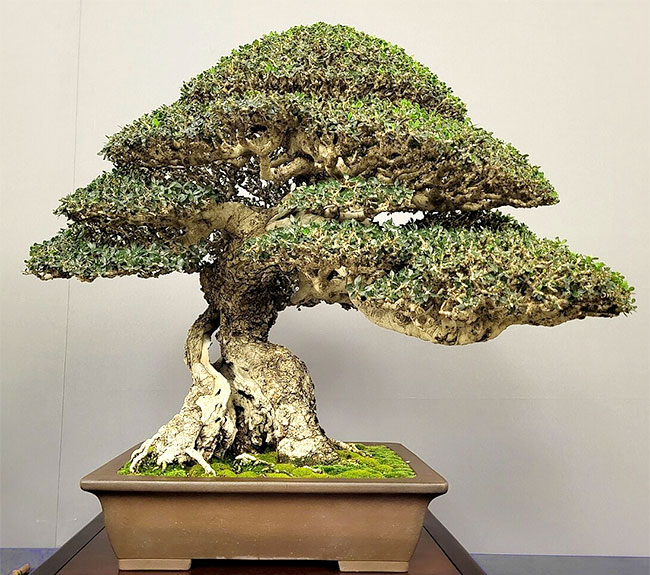
The Olive Bonsai Tree, scientific name Olea europaea, is native to Europe and Middle East. Some of the Olive trees can live for well over a thousand years.
Olive belogs to Oleaceae family which contains about 20 different species but only Olea europaea produced editable fruits.
Fruit “olive” is of major agricultural importance in the Mediterranean region used to produce live oil which is used all over the world.
Olive tree is grown for its scented creamy blooms, edible fruits, old-looking cracked bark and dark green leathery leaves.
Very durable tree that can tolerate drought, wind and salt. This bonsai can be grown outdoors or indoors. Enjoys hot summer sun.
Additional Information
Family: Oleaceae
Scientific name: Olea europaea
Common Names: Common Olive, European Olive, Olive
Origin: Native to the coastal areas of the eastern Mediterranean Basin as well as northern Iran at the south end of the Caspian Sea.
Appearance: There are many different varieties. Some have long, narrow leaves while the leaves on others are almost round.
Leathery leaves are dark glossy green to the top and light green or silvery below. The leathery foliage is supported by attractive light gray bark that becomes increasingly gnarled.
Flowering: It produces small fragrant creamy flowers in spring. Flowers are followed by green fruits “olives” which ripen to black and are ready for harvest in autumn. Olives are very often used to make olive oil.
Outdoor/Indoor Use: Both.
Light Requirements: Prefers full sun. When grown indoors, make sure to provide it with enough sunlight. Near a window with bright sunlight is an ideal location.
Water Requirements: Olives will enjoy occasional misting during hot summer weather. Keep the soil slightly on the dry side by watering heavily but infrequently.
The colder the temperature the less water it will require. Olives like most plants native to dry habitats, are opportunists when it comes to water consumption.
When water is available, it is quickly absorbed giving bonsai owner a false impression that the plant needs more watering. In reality, olive trees collect the water for later use, preparing for drought.
Try not to overwater it. Although olive bonsai is very drought tolerant, don’t let it sit without any water for a long time. The Bonsai root system is not as extensive, making it harder for the tree to survive in the dry soil.
Pruning/Training: Prune in spring or early fall. Shortening heavy branches may cause the remainder of the branch to die back instead of producing new shoots from around the wound.
Instead, new shoots might emerge from might trunk or even from the roots. It is best to do it in small stages rather than pruning it all at once.
Olive branches have very little tolerance for banding and snap at the base very easily. Wires should be applied very carefully since the bark is very fragile. If you absolutely have to use wires, wrap branches with raffia before wiring to avoid bark damage.
Bonsai Style: Avoid using styles that uncover the olive’s delicate roots. The following styles work the best: curved-trunk, multi-trunk, and tray planting.
Fertilizing: Feed with well-balanced liquid fertilizer during the growing season. Do not feed during winter.
Repotting: Repot every two or three years in early spring before the leaves unfold. Use fast-draining bonsai soil mix to simulate the Mediterranean habitat.
Hardiness: Grows best in the USDA Zones 8-11. Native to dry arid hillside of the Mediterranean area, Olives are tolerant to droughts, however without an extensive root system they develop in the wild, and they will suffer if allowed to remain dry for too long.
Some varieties can tolerate temperatures as low as 33F for a short period of time. But usually, it should be protected from temperatures below 41F.
Insects and Diseases: Aphids, scales, and spider mites.
Propagation: By seeds or cuttings.
